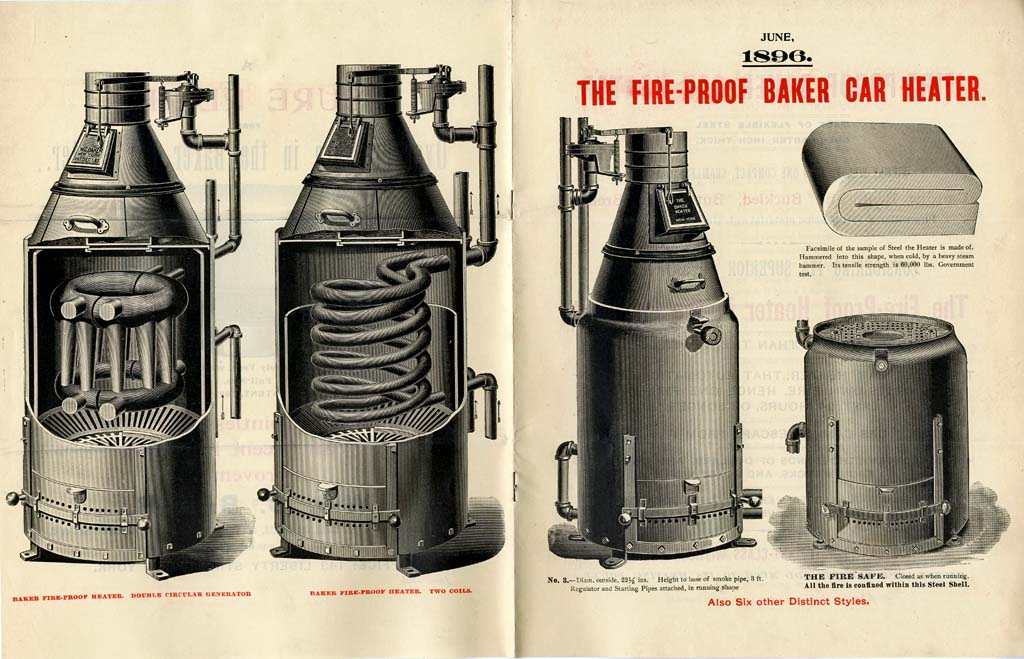
|
The Baker Heater was a heating system much like the hot-water heating system in a modern house. A small stove was surrounded by a coil of
iron pipe inside a sheet metal jacket. The lower end of this coil was attached to a system of pipes that snaked their way through the car near the
floor, eventually returning to the vicinity of the stove, where it rose up through the roof of the car to a reservoir mounted on the roof of the
car. The upper end of the coil was also attached to the same reservoir. The reservoir had a filler opening and a safety valve. Water heated by the
stove moved through the piping by convection, requiring no pump of any kind due to the small size of the system.
To keep the water from freezing during any period the stove was shut down during the winter, as much fine, dry, salt was added as would dissolve. This "antifreeze" was good down to about 1 degree above zero. Below that, either the system had to be drained or the stove kept going. Because the system was airtight the salt did not corrode the pipes. The Baker system offered the great advantage of steady and relatively even heat throughout the car, and George Pullman was one of its foremost exponents. But it suffered one major problem: higher first cost. One Baker system could provide much better and more efficient heating than two stoves. But two stoves were a lot cheaper. The presence of a Baker heater in a car would be recognized by the presence of the reservoir on the roof near the smokepipe. The reservoir was shaped like a small LP gas tank, but was often covered by a sheet metal cover that made it look more rectangular. The Baker Heater system was developed by William C. Baker (1828-1901). He did not invent hot water heat, but he was the first to apply it to railroad cars. Baker came to New York from Maine in 1850, and he soon became interested in central heating. In 1851 he helped install the first steam-heat system in New York City. His interest gradually turned from heating buildings to heating railway cars. Around 1865 he was ready to test his first system and in 1866 got the first of forty patents he would eventually acquire. Within a few years the Baker heater was found on nearly every first-class car in the country. But few railroads felt they could afford to spend $500 to equip an ordinary coach with a Baker system when they could install two $10 coal stoves. |